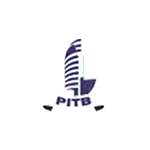
Start Your Full Stack Web Development Journey with OZI Trainings
Unlock your potential today and kickstart your career in tech industries as a full stack web developer by enrolling in our advanced Full Stack Web Development Course at OZI Trainings in Lahore, Pakistan. Become a certified web developer and gain hands-on experience with our seasonal industry experts. Enroll now and start building your future in web development _ Secure your spot today!
What is Full Stack Web Development:
Web Development is a holistic approach that combines the building of both the front-end (client-side) and back-end (server-side) components of a web application. This includes knowledge of languages and frameworks such as HTML, CSS, JavaScript for the front end, and Python, Java, or Node.js for the back end. A full stack web developer is capable of creating user interfaces, managing server-side logic, and interacting with databases, allowing them to build complete Web solutions from start to end.
Software development plays an important role in modern tech industries due to its ability to integrate both front-end and back-end technologies. Web developers enhance project efficiency, reduce costs by minimizing the need for multiple specialists, and provide a holistic understanding of the development process.
The scope of software engineering and development is vast and continually expanding, full stack development opens up various career paths, including roles such as web developer, software engineer, and technical lead. The demand for full stack web developers continues to rise as businesses seek professionals who can manage multiple aspects of web development
How to Become a Full Stack Developer:
To becoming a full stack developer involves mastering both front-end and back-end development skills. Learn HTML, CSS, and JavaScript, which are the core tools for building the front end of websites. These will help you create the visual side of websites. Once you’re comfortable with front-end development, move to the back-end. Learn languages like Python, Ruby, or Java, and familiarize yourself with databases like MySQL or MongoDB.
It is important to practice regularly by building small projects, like a simple blog or a to-do list app. This will help you understand how the front-end and back-end work together.
Suggested Learning Paths for Front-End and Back-End Technologies:
1. Front-End Web Development:
Front-End Web Development deals with the visual aspects of a website, including everything from layout and color schemes to forms and buttons. It involves developing user interfaces and ensuring that web pages render correctly across various devices and screen sizes. Front-end developers utilize languages like:
- HTML (HyperText Markup Language): HTML is used to create structure and design web pages of a website. HTML uses a system of tags for different types of content, such as text, images, and links, making it a fundamental building block of web development.
- CSS (Cascading Style Sheets): CSS is used to control the presentation and layout of web pages. It allows developers to apply styles to HTML elements, including adjustments to colors, fonts, spacing, and overall layout.
- JavaScript: It allows developers to enhance user experiences by adding dynamic features such as animations, form validations, and real-time updates. JavaScript is a core technology of the web, alongside HTML and CSS.
Front-end Frameworks/libraries:
- React: A JavaScript library for building user interfaces.
- Angular: A platform and framework for building single-page client applications.
- Vue.js: A progressive JavaScript framework for building user interfaces.
2. Back-End Web Development:
Server-Side Languages:
- Node.js: A JavaScript runtime built on Chrome’s V8 JavaScript engine, used for building fast and scalable server-side applications.
- Python: Often used with frameworks like Django and Flask for web development.
- Ruby: Often used with the Ruby on Rails framework.
- PHP: A popular language for web development, especially for WordPress.
Databases:
- SQL Databases: Such as MySQL, PostgreSQL, SQLite.
- NoSQL Databases: Such as MongoDB, and CouchDB.
- APIs (Application Programming Interfaces): RESTful services and GraphQL for communication between client and server.
3. Full-Stack Frameworks
Full stack frameworks are comprehensive software frameworks that provide developers with the tools and libraries necessary to build both the front-end and back-end of web applications. These frameworks often come with pre-built components and libraries that facilitate rapid development.
- MEAN/MERN Stack: MongoDB, Express, Angular/React, Node.js.
- LAMP Stack: Linux, Apache, MySQL, PHP.
- Django (Python): A high-level Python web framework that encourages rapid development.
4. DevOps and Version Control
DevOps, version control is essential for managing code changes efficiently, facilitating continuous integration and deployment, and ensuring that teams can deliver software updates rapidly and reliably
- Version Control: Using Git for version control and collaboration.
- Deployment: Understanding server management, deployment tools, and cloud services like AWS, Heroku, and Azure.
5. Additional Skills
- UI/UX Design: Understanding the principles of user interface and user experience design.
- Responsive Design: Ensuring that applications work well on a variety of devices and screen sizes.
- Security Best Practices: Implementing measures to protect data and applications from attacks.
Best Practices for Web Developers
Keep your code simple and modular. This is the best practice with full stack development, which will make it easier to change it or fix issues because you wouldn’t have to rewrite large pieces of code. It’s also a security measure to ensure that your application is protected from common threats such as SQL injection or cross-site scripting. Keep in mind, while you test often, some major bugs may come through to be found before they become a huge problem. Performance also comes into the agenda; eliminate unused assets and make sure pages load quickly enough for a smooth user experience.
Why Choose Us:
If you’re looking to start your journey as a full stack web developer, enroll in our full-stack web development course at OZI Trainings in Lahore Pakistan! Start your journey towards becoming a skilled software developer and unlock new career opportunities. Whether you’re a beginner or looking to enhance your skills, our expert-led classes will guide you through every step of the process.

Course Price: $74.00
- Instructor : Eleanor Fant
- Lectures :14
- Enrolled :20 students
- Duration :6 weeks
- Language :English
Meet Our Industry and Academia Partners









Related Courses
BROWSE ONLINE RELATED COURSE

GROW YOUR BUSINESS BY MASTERED IN SOME TECHNIQUE
- 1,8k+ Students
- 3h 15min
- 5.0 Reviews

TOP 10 TIPS TO GROW UP AUDIENCE TO PROGRESS BUSINESS
- 1,8k+ Students
- 3h 15min
- 5.0 Reviews

JAVA PROGRAMMING A-Z FULLY CLASSES WITH FULL TASK
- 1,8k+ Students
- 3h 15min
- 5.0 Reviews



